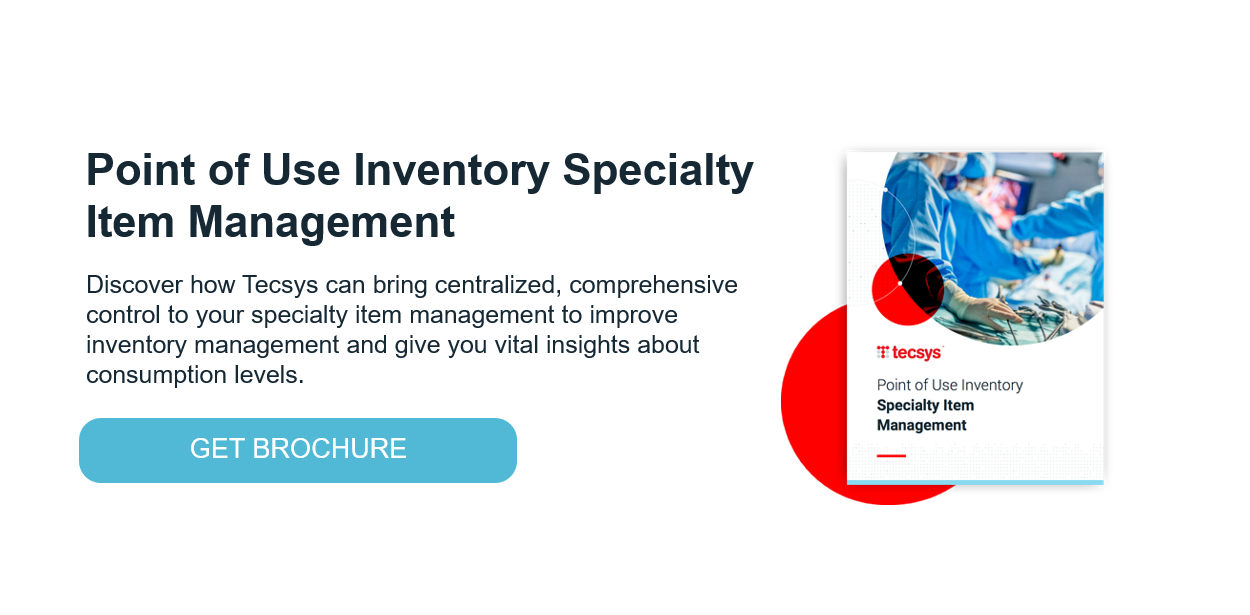Physician Preference Best Practices to Reduce Healthcare Supply Chain Costs

Understanding the true cost of care delivery has long been an elusive goal for hospital leaders. This is especially true for the perioperative space, which is both the greatest revenue generator and highest area of healthcare supply chain costs for most organizations. With surgeons each choosing their own high-cost supplies, such as hip or knee implants, and management of these items taking place outside of standard supply chain channels, hospital supply chain leaders lack visibility into how physician preference items (PPI) impact clinical quality and financial outcomes.
If Dr. A. is using one brand of knee implant, while Dr. B. is using a different implant that is double the cost, how can you determine whether the higher-cost item yields improved patient outcomes? In this instance, what if the lower-cost item produces better outcomes while being more cost effective? That is the million-dollar question – or rather the $200 billion question as that is the amount our nation spends annually on medical devices.
At a time when hospitals are struggling financially from a significant drop in elective procedures because of the COVID-19 pandemic, coupled with sharply increased labor and supply costs associated with surges in virus patient volumes, it is time to finally address the PPI clinical cost and care issues that have been plaguing the U.S. healthcare industry for decades.
Hospitals need accurate case costing data for comparative effectiveness in order to provide fact-driven recommendations on how to prevent financial waste and standardize on supplies to reduce variation with preference items.
Three Steps to Reduce Healthcare Supply Chain Costs
1. Secure Senior Leadership Support
U.S. supply chain leaders have acknowledged how the pandemic has raised C-suite awareness for the strategic role and importance of supply chain to patient care and operational performance; therefore, now is the time to act. The high costs and wasteful care variation that PPI drives within hospitals has been well documented, but in the past leadership has been reluctant to invest in the technologies required to rein in this area of spend. Making your leaders aware of the problem and proven solutions is the first step.
For those hospitals that still struggle to generate accurate supply spend data for preference items, leverage industry resources, such as third-party studies and reports conducted on the clinical and financial impact of physician preference, to help make the case to leadership for resource investments. Your supply chain solutions provider may even have case studies documenting how hospitals similar to yours have successfully addressed PPI in their organizations, with proven results that you can present to your organization’s leaders to make the case for change.
2. Identify the Right Partner
Once senior leadership is on board and you have resources to address your healthcare supply chain costs and PPI challenges, look for a technology solutions provider that you can trust. While some of the largest U.S. integrated delivery networks (IDNs) have huge information technology (IT) teams, including on-site developers, if you are a small-to-mid-sized hospital your in-house resources are likely far more limited. As a result, you will need to lean heavily on your technology partner for advice on PPI strategy development, process mapping and system implementation.
Supply chain in healthcare is unlike that of any other industry, especially when it comes to PPI. Therefore, it is critical to work with a technology partner that has extensive end-to-end healthcare supply chain knowledge, documented experience with hospitals in addressing this specific challenge area, and customers who are willing to serve as references. Supply chain is critical to your hospital’s clinical outcomes and costs, so don’t place yours in the hands of an inexperienced, fly-by-night app developer that will likely create more problems rather than solve them.
3. Integrated Systems and Access Data
While those hospitals with more advanced supply chain operations have leveraged technology to get a better handle on PPI inventory management, billing and supplier payments, most still struggle with determining how variation in products impacts patient outcomes.
Accurate case costing can only be achieved if a hospital has access to accurate and timely data on the cost of its supplies, their usage in procedures, the outcomes of patients and the captured revenue from its cases. This requires a technology platform that can fully integrate with supply chain, clinical and financial systems, including the electronic health record (EHR), for near-real-time data assimilation and analysis.
To gain a true understanding of product usage, perform comparative effectiveness and uncover opportunities to lower healthcare supply chain costs without reducing quality of care, the platform should enable you to:
- Analyze trends in lines and procedures such as consumption, cost and waste to identify savings opportunities at the procedure, physician and item level.
- Analyze procedure case costing trends and evaluate high-cost procedures to optimize product utilization and manage evidence-based PPI standardization.
- Analyze clinical procedures and physicians in comparison to their peers, which helps you visualize the outliers based on case volume and items truly used vs. wasted.
- Gain insight on the preference cards that need to be evaluated and optimized based on items added, unused, returned or lost providing indications on which items should be removed, quantity to be reduced or revised.
Reach Your Healthcare Supply Chain Cost Savings Goals in Your Hospital’s PPIs
Most likely, your organization has tried to tackle PPI challenges before, but has been unable to stick to a plan. Trust me when I say there are proven processes, tools and technologies that will enable you to transform your clinical settings in order to effectively manage costs, drive standardization, capture product utilization and achieve end-to-end supply chain clarity.




